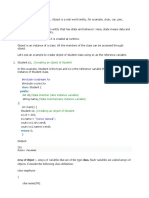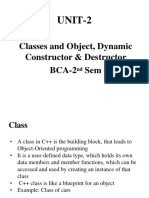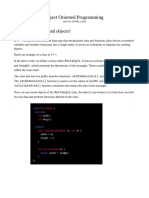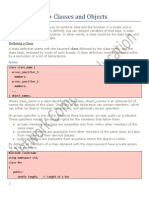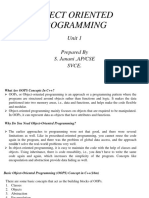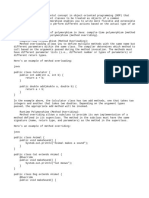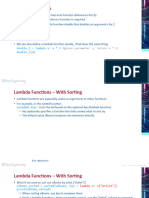0% found this document useful (0 votes)
70 views9 pagesWhat Is A Constructor?: - Same Name As Class Name - No Return Type ( No Void) - Implicitly Called
Constructors are special member functions that are called automatically when objects are created. They initialize the allocated memory for objects and are used to set initial values for data members. Constructors can be overloaded to support different initializations and are called only once per object upon creation. Destructors are used to destroy objects and perform cleanup tasks when objects go out of scope.
Uploaded by
BCS19-208 HamzaCopyright
© © All Rights Reserved
We take content rights seriously. If you suspect this is your content, claim it here.
Available Formats
Download as PDF, TXT or read online on Scribd
0% found this document useful (0 votes)
70 views9 pagesWhat Is A Constructor?: - Same Name As Class Name - No Return Type ( No Void) - Implicitly Called
Constructors are special member functions that are called automatically when objects are created. They initialize the allocated memory for objects and are used to set initial values for data members. Constructors can be overloaded to support different initializations and are called only once per object upon creation. Destructors are used to destroy objects and perform cleanup tasks when objects go out of scope.
Uploaded by
BCS19-208 HamzaCopyright
© © All Rights Reserved
We take content rights seriously. If you suspect this is your content, claim it here.
Available Formats
Download as PDF, TXT or read online on Scribd
/ 9


